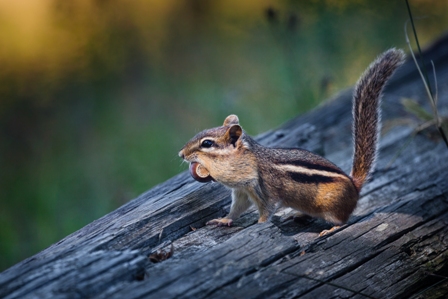 While it’s only a matter of weeks before we will be seeing chipmunks scurrying about, it’s not unheard of to see one before spring sets in. Unlike woodchucks and bears, chipmunks are not true hibernators.
While it’s only a matter of weeks before we will be seeing chipmunks scurrying about, it’s not unheard of to see one before spring sets in. Unlike woodchucks and bears, chipmunks are not true hibernators.
Animals that hibernate spend the months leading up to winter bulking up on high fat foods. They can then live off of their body reserves for months on end. Since chipmunks don’t have the ability to put on enough extra fat to last them through the winter, they cache seeds and nuts underground in their burrows.
Every seven or eight days, chipmunks wake up and munch down some of their food stash to keep them going through the winter. This irrupted state of hibernation is known as torpor. Torpor is a restless sleep that can last for days where animals lower their body temperature, heart rate, and oxygen consumption to conserve energy.
This might sound like a life of luxury, sleeping and eating the time away until winter passes, but it’s quite physiologically taxing for the chipmunks. It is a life or death balance between storing enough food and conserving enough energy.
Come late March, early April, chipmunks emerge from their burrows ready for spring. When they do, you’ll have a new appreciation for their survival knowing how they struggled through the winter (or how hard winter was).
Photo © Justin Miel

